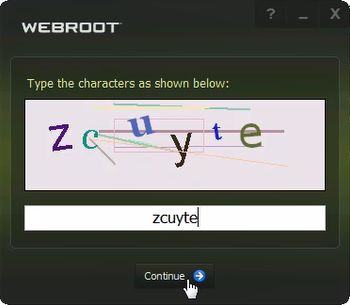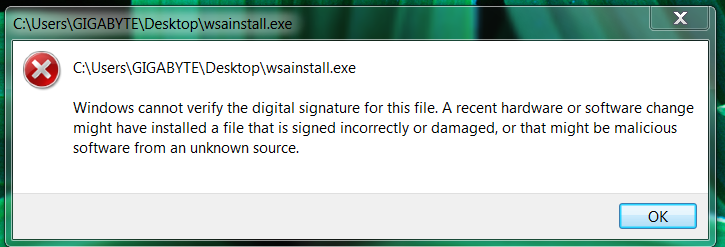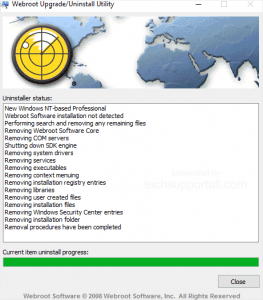

- #Uninstall webroot client windows 10 install
- #Uninstall webroot client windows 10 software
- #Uninstall webroot client windows 10 code
For more info, please contact your help desk.Īnother possible error is this: General failure. Your organization's policies are preventing us from completing this action for you. In Outlook 2019 - Outlook 365, the message is different though its meaning is as vague and unclear as before: Please contact your system administrator. This operation has been cancelled due to restrictions in effect on this computer. In Outlook 2010 and Outlook 2007, the error message is as follows: You have always opened links in Outlook just fine, and then all of a sudden hyperlinks stopped working and whenever you click on a link embedded in an email, you end up getting the error. These methods will let you open links in your Outlook emails again with no problem, no matter which version you use - Outlook 365, 2021, 2019, 2016, 2013, 2010, and lower. Make sure to assign a new policy if the Unmanaged policy has been selected.The article explains why hyperlinks may not be working in Outlook and provides several solutions to fix the issue. Once the endpoints are reactivated, you need to reinstall the Webroot agent to get them to report into the console and be fully protected. Check the box for the devices to reactivate. Then click the Deactivated Endpoints group to display the list of deactivated devices.Ĥ. In the Endpoint Protection console, click the Group Management tab. Go to the Endpoint Protection tab and click Go to Endpoint Protection Consoleģ. Select Sites List and click the Site where you want to reactivate a device.Ģ. Log in to the Webroot management console from Atera > Add-ons > Webroot.Ģ. If you deactivate an endpoint by mistake and wish to reinstate it, you can reactivate it from the Deactivated Endpoints Group accessible via the Endpoint Protection console.ġ. Reactivate Webroot SecureAnywhere on endpoints You can run the script immediately or automatically through an IT Automation profile. Otherwise, you can uninstall Webroot directly on the local machine from Programs & Features, or by using the Uninstall Webroot script in Atera's Shared Script Library: If the Antivirus was installed through Atera, you can uninstall it from the Device page > Manage > Apps > Webroot > Uninstall: In case the uninstall command does not reach the endpoint, there are two options for removing Webroot SecureAnywhere through Atera. Deactivated devices are moved to the Deactivated Endpoints Group, accessible via the Endpoint Protection console. The agent will be uninstalled from the device when the device checks in. Click Deactivate Device to confirm the command and proceed with the deactivation. A warning message appears, indicating that an uninstall command will be sent to the selected device.Ĩ. This action retains the endpoint entry in the Webroot Management console (although it displays a status of "Not Seen" after 7 days).ħ. Note: If you don't want to remove the endpoint from the Management Portal but still want to uninstall the agent software, you can send an Uninstall Agent command instead. Then, select the endpoints you wish to deactivate from the list, then under Agent Commands drop-down menu, select Deactivate Device. On the Change Policy Windows, select the Unmanaged policy then click on Change Policy.Ħ. Select the endpoints you wish to deactivate from the list, then click on Change Policy.ĥ. Under Manage > Entities, click the relevant Customer Site.Ĥ.

#Uninstall webroot client windows 10 code
Enter your Email/Phone, Password, and Security Code when prompted.ģ. Log in to the Webroot management console from App Center, then click on Webroot.Ģ.

If the uninstallation command does not reach the endpoint, see Uninstall Webroot through Ateraġ. This would similarly apply to every DNS-enabled site.
#Uninstall webroot client windows 10 software
For accurate billing, please ensure that the Webroot software has been completely removed from each chosen device. Note: You will be billed based on the maximum number of protected devices you have during your billing cycle, regardless of their installation date.
#Uninstall webroot client windows 10 install
By deactivating an endpoint, you can free the license seat so you can install another endpoint in its place. Deactivate Webroot-protected endpoints when they are no longer in use. You can reactivate an endpoint later, if necessary.


 0 kommentar(er)
0 kommentar(er)
